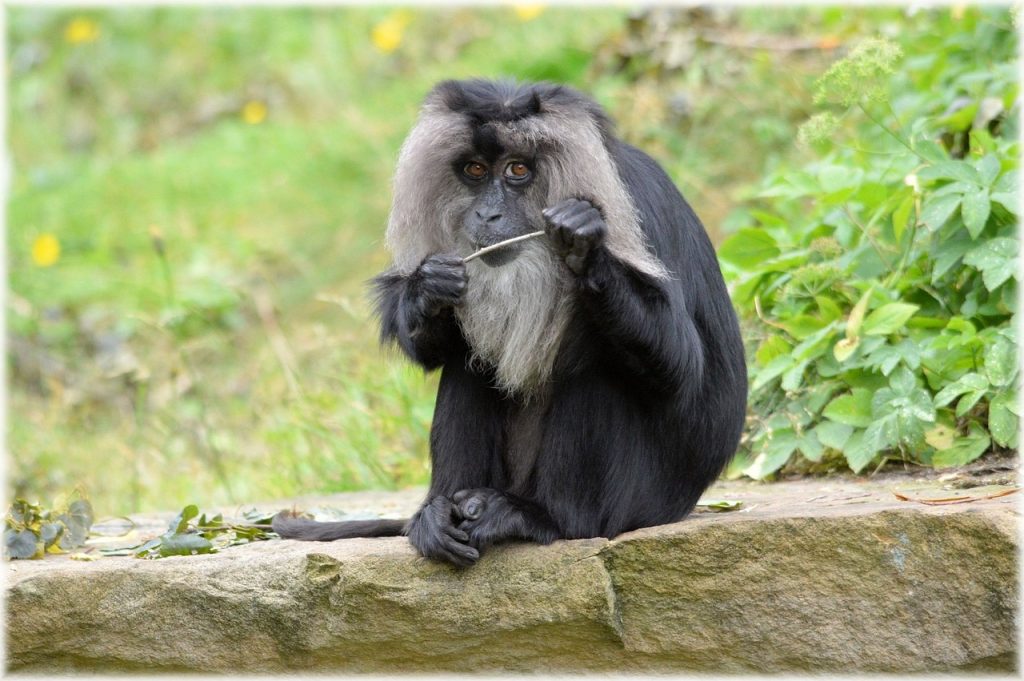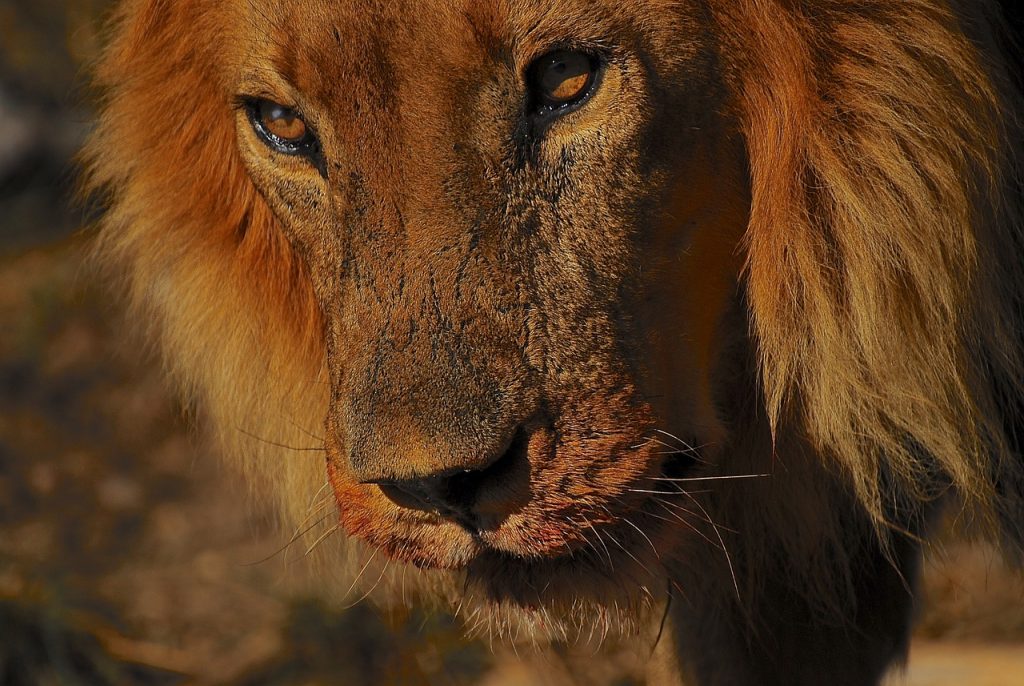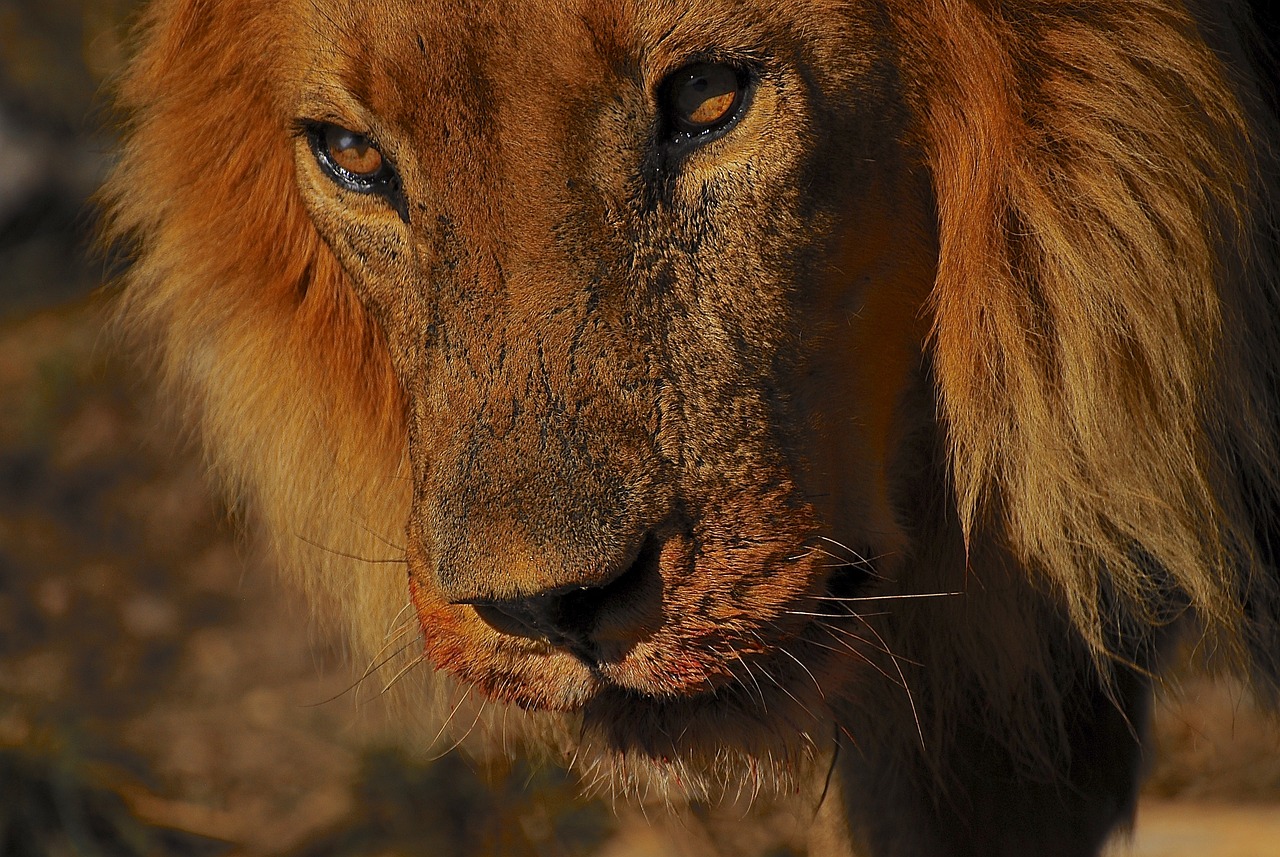Curious about how lion populations are monitored and managed? In this article, we’ll take a closer look at the fascinating world of lion conservation. Discover the innovative techniques and methods used by the lion experts to keep track of these majestic creatures and ensure their well-being. From GPS collars to aerial surveys, you’ll gain insight into the intricate process of managing lion populations in the ever-changing African landscape. So, join us as we embark on a journey to understand the efforts made to protect these iconic creatures and their habitats.

Methods of Lion Population Monitoring
Camera Trapping
Camera trapping is a widely used method in monitoring lion populations. It involves placing motion-activated cameras at strategic locations within lion habitats. These cameras are then triggered by the movement of the lions, capturing images that provide valuable information about their behavior, population size, and distribution. Camera trapping allows researchers to non-invasively monitor the lions without causing disturbance to their natural behavior. This method has proven to be highly effective in gathering data on lion populations in various habitats.
Field Surveys
Field surveys are another important tool in monitoring lion populations. This method involves conducting systematic and comprehensive surveys in lion habitats to collect information on population density, age structure, and sex ratio. Field surveys are typically conducted by trained researchers who collect data through direct observations, tracking, and recording lion signs such as tracks, scat, and territorial markings. These surveys provide valuable insights into the overall health and population dynamics of lion populations.
Radio Telemetry
Radio telemetry is a sophisticated method used to track and monitor individual lions within a population. This technique involves fitting lions with radio collars that emit signals, which can be tracked and monitored using radio receivers. By tracking individual lions, researchers can gather data on their movement patterns, home range size, and habitat preferences. Radio telemetry allows for real-time monitoring of lion populations, providing valuable information for conservation and management decisions.
Direct Observation
Direct observation involves physically observing lions in their natural habitats to gather information on their behavior, population size, and social structure. This method requires trained researchers to spend extended periods of time in the field, carefully documenting lion activities and interactions. Direct observation provides valuable insights into the daily lives of lions and allows researchers to gather data on their hunting behavior, territorial disputes, and reproductive patterns. While this method can be labor-intensive and time-consuming, it provides valuable firsthand information on the dynamics of lion populations.
Monitoring Lion Habitat Quality
Remote Sensing Techniques
Remote sensing techniques, such as satellite imagery and aerial surveys, are used to monitor lion habitat quality over large areas. These techniques provide detailed information on vegetation cover, land use changes, and habitat fragmentation. By analyzing these remote sensing data, researchers can assess the quality and suitability of lion habitats, identify potential threats, and prioritize conservation actions. Remote sensing techniques are crucial in understanding the broader ecological context in which lion populations exist.
Vegetation Analysis
Vegetation analysis is an important component of monitoring lion habitat quality. By studying the types and abundance of vegetation within lion habitats, researchers can assess the availability of prey species, the condition of grazing lands, and the overall health of the ecosystem. Vegetation analysis involves collecting samples, measuring plant characteristics, and analyzing data to determine the quality and carrying capacity of the habitat for lion populations. This information is vital for making informed management decisions to ensure the long-term sustainability of lion populations.
Challenges in Monitoring Lion Populations
Large Home Ranges
One of the major challenges in monitoring lion populations is their large home ranges. Lions are highly mobile animals that require vast territories for hunting, breeding, and maintaining social structures. As a result, monitoring their populations across such large areas can be logistically challenging and resource-intensive. Researchers often have to employ innovative techniques, such as camera trapping and remote sensing, to overcome these challenges and gather accurate data on lion populations.
Inaccessibility of Some Habitats
Another challenge in monitoring lion populations is the inaccessibility of certain habitats. Lions inhabit diverse landscapes, including dense forests, rugged mountains, and remote savannahs. Some of these habitats may be difficult to access due to their remoteness, lack of infrastructure, or security concerns. In such cases, researchers may have to rely on indirect monitoring methods, such as satellite imagery and remote sensing, to gather data on lion populations. Collaborations with local communities and the use of technology play a crucial role in overcoming the challenges posed by inaccessible habitats.
The Role of Local Communities
Community-Based Monitoring
The involvement of local communities is essential for successful lion population monitoring and management. Local communities often have a deep understanding of the landscape and the behavior of lions, gained through generations of coexistence. Community-based monitoring involves empowering local communities to actively participate in data collection and management efforts. This can include training local volunteers to conduct surveys, report lion sightings, and monitor potential threats to lion populations. The involvement of local communities not only enhances the accuracy and coverage of monitoring efforts but also fosters a sense of ownership and responsibility towards lion conservation.
Indigenous Knowledge
Indigenous knowledge plays a crucial role in monitoring lion populations, especially in regions where local communities have traditionally coexisted with lions. Indigenous communities possess a wealth of knowledge about lion behavior, habitat use, and ecological interactions, which can complement scientific research efforts. By incorporating indigenous knowledge into monitoring programs, researchers can gain valuable insights into lion populations and develop a more holistic understanding of their ecology. This collaboration between scientific research and indigenous knowledge promotes cultural diversity and encourages community engagement in lion conservation initiatives.

Conservation Initiatives for Lion Management
Protected Areas
Protected areas, such as national parks and wildlife reserves, play a vital role in conservation and management of lion populations. These designated areas provide a safe haven for lions, preserving their natural habitats and protecting them from human disturbance. Protected areas often have strict regulations to prevent illegal hunting and habitat destruction, ensuring the long-term survival of lion populations. Establishing and effectively managing protected areas is crucial for maintaining healthy lion populations and safeguarding their habitats.
Translocations and Reintroductions
Translocations and reintroductions are conservation strategies used to enhance lion populations in certain areas or restore them in their historical range. Translocations involve capturing lions from one location and relocating them to another suitable habitat. This strategy helps in establishing new populations or increasing genetic diversity in existing populations. Reintroductions aim to reintroduce lions into areas where they have been locally extinct, with the goal of reestablishing viable populations. These conservation initiatives are carefully planned and executed in collaboration with local communities and conservation organizations.
Hunting and Trophy Management
Hunting and trophy management programs are controversial conservation initiatives aimed at generating revenue for lion conservation and supporting local communities. These programs involve sustainable hunting practices under strict regulations, where a limited number of lions are legally hunted each year. The revenue generated from hunting permits and trophy fees is then reinvested into conservation projects, habitat management, and community development. While this approach is debated, proponents argue that it can create incentives for local communities to conserve lion populations and their habitats.
Human-Wildlife Conflict and Its Impact on Lions
Livestock Predation
Human-wildlife conflict, particularly livestock predation by lions, is a significant challenge in lion conservation and management. Lions sometimes prey on livestock, leading to economic losses for local communities and increased hostility towards lion populations. Livestock predation can result in retaliatory killings, where lions are intentionally killed in response to livestock losses. Monitoring human-lion conflict incidents, identifying hotspot areas, and implementing mitigation measures, such as improved livestock husbandry practices and predator-proof enclosures, are crucial for reducing conflicts and ensuring the coexistence of lions and local communities.
Retaliatory Killings
Retaliatory killings, also known as human-lion conflict killings, occur when lions are intentionally targeted and killed in response to real or perceived threats to human safety or livelihoods. These killings often result from fear, lack of awareness, or economic losses caused by lions. Retaliatory killings pose a significant threat to lion populations, as they can lead to local extinctions and disrupt the delicate balance of ecosystems. Collaboration between conservation organizations, local communities, and government authorities is essential in raising awareness, implementing education programs, and providing incentives for communities to mitigate conflicts without resorting to killing lions.
Mitigation Strategies
Mitigating human-wildlife conflict and reducing the negative impacts on lion populations require the implementation of effective strategies. These strategies include implementing early warning systems, providing training and support in conflict resolution, promoting alternative livelihoods for communities affected by livestock predation, and establishing compensation programs for livestock losses. Additionally, the use of advanced technologies such as electric fences, predator deterrents, and community-based early warning systems can help prevent conflicts and protect both humans and lions. These mitigation strategies, when combined with community engagement and education, can promote peaceful coexistence between humans and lions.

International Efforts and Collaborations
Convention on International Trade in Endangered Species (CITES)
The Convention on International Trade in Endangered Species (CITES) is an international agreement aimed at regulating the trade of endangered species and their parts to ensure their survival in the wild. Lions are listed under Appendix II of CITES, which means that international trade in lion specimens must be controlled and monitored to prevent their unsustainable exploitation. CITES plays a crucial role in conserving lion populations by regulating their trade, reducing illegal hunting, and promoting cooperation among countries to protect and manage lion populations.
International Union for Conservation of Nature (IUCN)
The International Union for Conservation of Nature (IUCN) is a global organization dedicated to the conservation of nature and the sustainable use of natural resources. The IUCN plays a key role in monitoring lion populations, assessing their conservation status, and developing conservation strategies. The IUCN Red List of Threatened Species categorizes lions as “Vulnerable,” indicating that they are facing a high risk of extinction in the wild. Through its extensive network of experts and collaborations with governments and stakeholders, the IUCN works to promote lion conservation, provide scientific guidance, and advocate for their protection.
Technological Advancements in Lion Monitoring
Genetic Markers and DNA Analysis
Advancements in genetic markers and DNA analysis techniques have revolutionized lion monitoring and research. Genetic markers, such as microsatellites, allow researchers to study the genetic diversity, relatedness, and population structure of lion populations. DNA analysis can also provide valuable insights into individual identification, paternity determination, and kinship relationships within lion social groups. These genetic tools contribute to the understanding of lion populations, their connectivity, and the impact of management strategies on their genetic health.
Satellite Tracking
Satellite tracking technology has greatly improved the monitoring of lion movements and home range sizes. By fitting lions with GPS collars equipped with satellite transmitters, researchers can track their movements in real-time and analyze their habitat use patterns. Satellite tracking provides essential data on lion dispersal, migration, and response to environmental changes. This technology enables researchers to gain a better understanding of the spatial requirements and ecological needs of lions, informing management decisions and conservation strategies.
Geographic Information System (GIS)
Geographic Information System (GIS) technology is widely used in lion monitoring and habitat management. GIS allows researchers to analyze and visualize spatial data, such as habitat maps, land cover, and human activities. By overlaying this information with lion population data, researchers can identify key habitat corridors, potential conflict areas, and prioritize conservation efforts. GIS also facilitates the integration of data from various sources, enabling a more comprehensive understanding of the factors influencing lion populations and their habitats.

Population Management Strategies
Captive Breeding Programs
Captive breeding programs are employed to maintain genetic diversity and establish assurance populations for lions in captivity. These programs involve carefully selecting individuals for breeding based on their genetic compatibility and conservation value. Captive breeding programs play a vital role in maintaining viable populations of genetically diverse lions and serve as a safety net against potential population declines in the wild. However, the focus of conservation efforts should always remain on protecting and restoring wild lion populations and their natural habitats.
Fertility Control
Fertility control strategies are used to manage lion populations in situations where the natural environment cannot support their numbers or when conflicts arise with local communities. These strategies involve the use of contraception methods, such as immunocontraceptives or surgical sterilization, to control lion reproduction and regulate population growth. Fertility control can help in maintaining sustainable lion populations and reducing human-wildlife conflicts by managing population densities in specific areas. However, careful monitoring and long-term management is required to ensure the effectiveness and ethical considerations of these strategies.
Population Viability Analysis (PVA)
Population Viability Analysis (PVA) is a modeling technique used to assess the long-term viability of lion populations. PVA takes into account various factors such as population size, birth rates, mortality rates, and habitat suitability to predict population trends and evaluate the effectiveness of management strategies. PVA plays a crucial role in informing conservation decisions by providing quantitative assessments of the risks and benefits associated with different management options. The use of PVA helps ensure the sustainability and resilience of lion populations in the face of environmental changes and human impacts.
The Role of Scientific Research in Lion Management
Behavioral Studies
Behavioral studies play a fundamental role in understanding the social dynamics, reproductive behavior, and feeding ecology of lion populations. By closely observing lions in their natural habitats, researchers gain insights into their hunting strategies, social hierarchies, communication patterns, and parental care. Behavioral studies provide critical information on the ecological role of lions, their social structure, and factors that impact their behavior. These findings contribute to the development of effective management strategies and conservation plans to ensure the long-term survival of lion populations.
Ecological Modeling
Ecological modeling techniques are used to simulate and predict the responses of lion populations to environmental changes, habitat loss, and management interventions. By integrating data on lion behavior, demography, and habitat characteristics, ecological models help researchers understand the complex interactions between lions and their ecosystems. These models can be used to evaluate different management scenarios, assess the impacts of habitat alterations, and guide conservation strategies. Ecological modeling allows for evidence-based decision-making and enables proactive conservation actions to protect and sustain lion populations.
Long-Term Monitoring
Long-term monitoring is a critical component of lion management, allowing researchers to track population trends, analyze changes over time, and assess the effectiveness of conservation measures. Long-term monitoring involves the collection of standardized data on lion demographics, population size, and behavior over extended periods. By maintaining consistent monitoring efforts, researchers can detect early warning signs of population declines, evaluate the success of management interventions, and adapt conservation strategies accordingly. Long-term monitoring is essential for understanding the long-term dynamics of lion populations and their response to environmental changes and human impacts.
As habitats continue to shrink and human-wildlife conflicts persist, the monitoring and management of lion populations become increasingly important. Through a combination of innovative monitoring techniques, collaborations with local communities, and the application of scientific research, efforts can be made to safeguard the future of lions. Whether through camera trapping, remote sensing, or by involving local communities in monitoring efforts, each method and collaboration contributes to a collective goal of ensuring the survival and conservation of one of the most iconic and majestic species on our planet.

